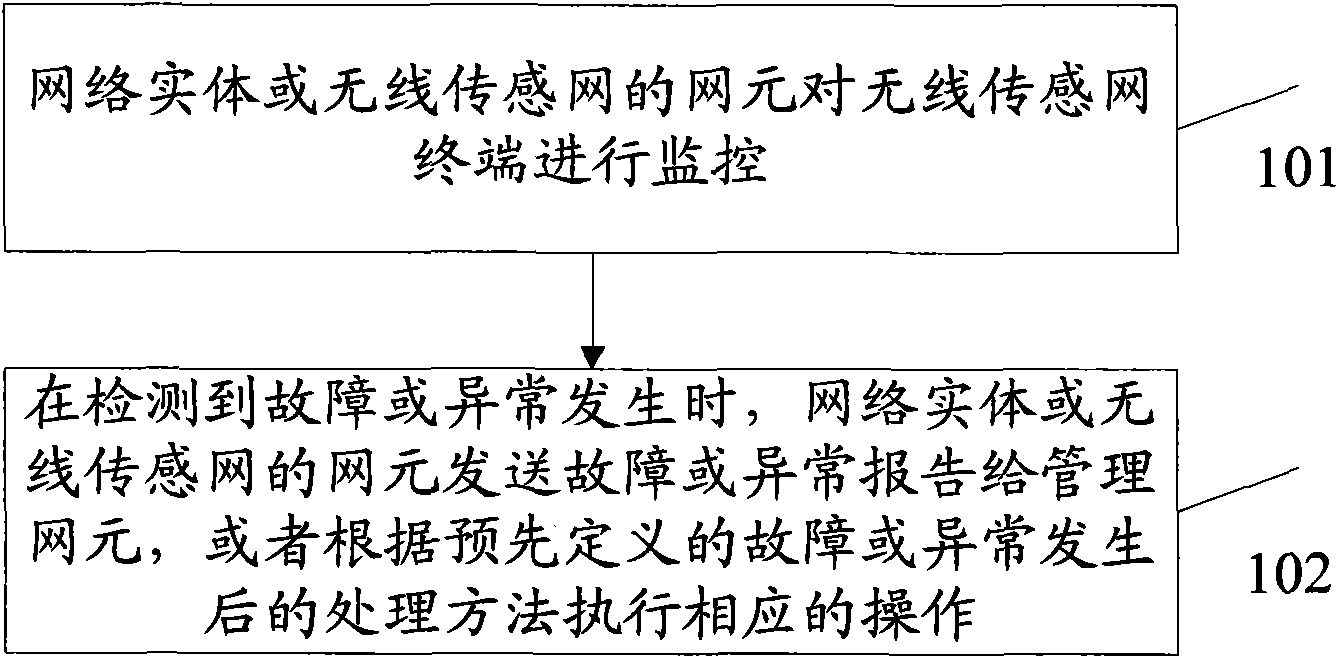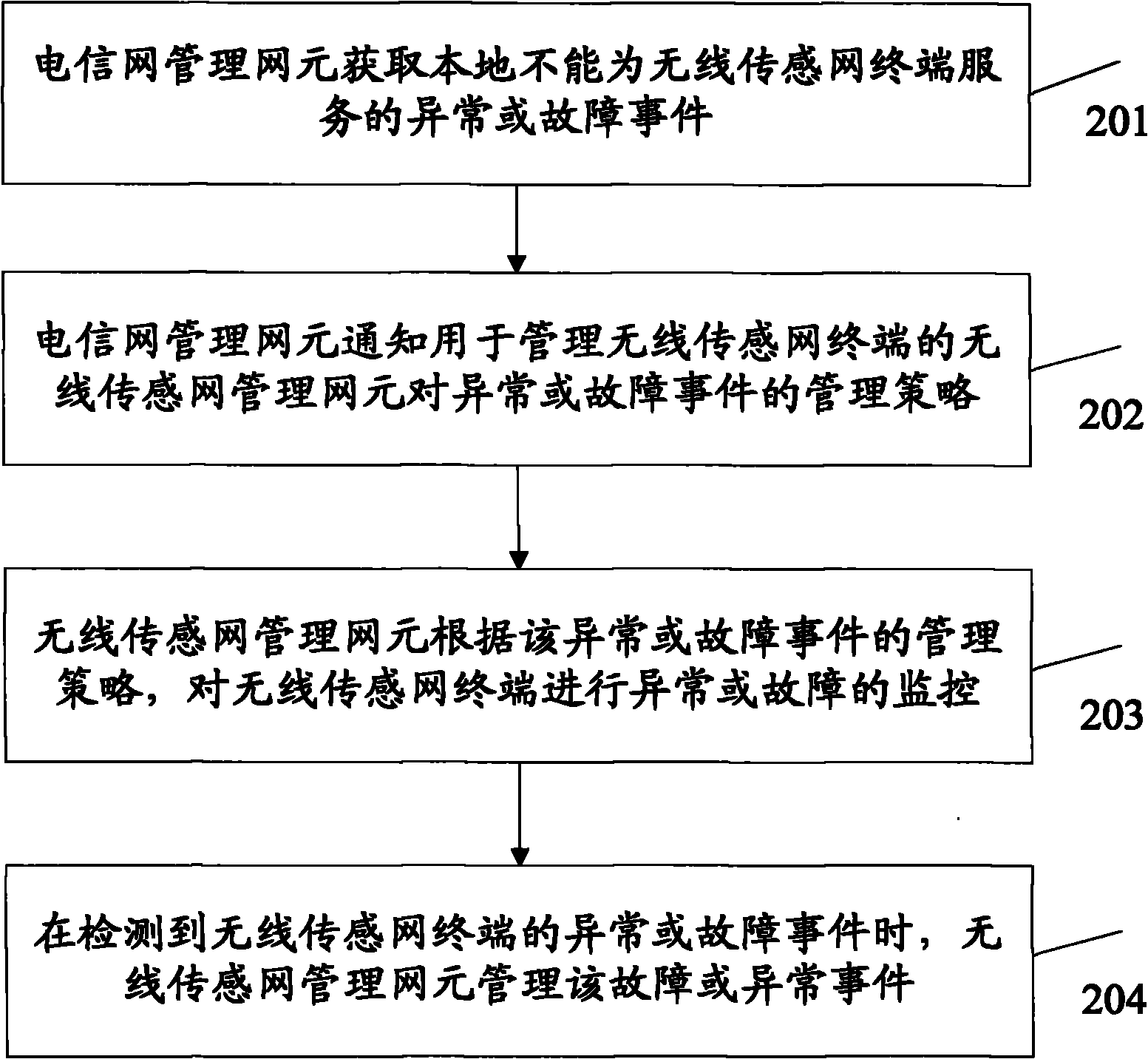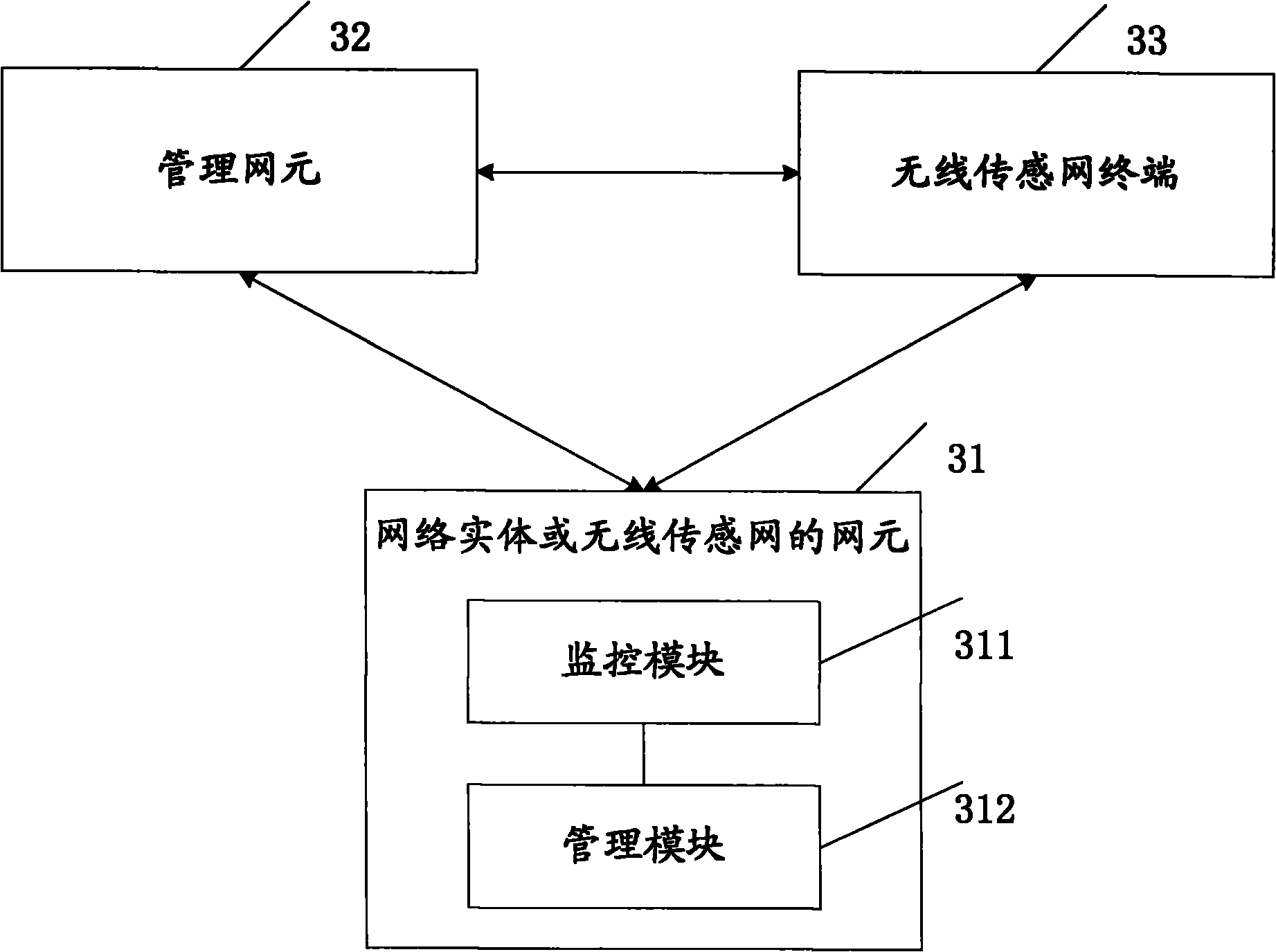Method and system for managing wireless sensing network terminal
A technology of wireless sensor network and processing method, which is applied in the field of management of wireless sensor network terminals, can solve problems such as service quality degradation, and achieve the effect of improving service quality
- Summary
- Abstract
- Description
- Claims
- Application Information
AI Technical Summary
Problems solved by technology
Method used
Image
Examples
Example
[0074] Specific application example one
[0075] The management platform defines faults or abnormal events as follows:
[0076] Event A: disconnect;
[0077] Relevant parameters for determining event A: Maximum detection period: X seconds;
[0078] The management platform sends the defined events and their parameters to the wireless sensor network gateway.
[0079] The wireless sensor network gateway monitors and detects the wireless sensor network terminal connected to the wireless sensor network gateway during the detection period. The wireless sensor network gateway sets the detection period T according to the received event-related parameters, and the value of T is equal to or less than the maximum detection period: X. The detection method can be as follows:
[0080] 3.1. Set a timer Timer1 with a timing length of T seconds, and start Timer1 at the beginning of each detection cycle to send detection information to the wireless sensor network terminal. After receiving the detection ...
Example
[0086] Specific application example 2:
[0087] The management platform defines faults or abnormal events as follows:
[0088] Event B: Illegal movement. This event applies to the location of the wireless sensor network terminal when the terminal user signs up. Such as vending machine monitoring settings, parking lot monitoring equipment, etc.
[0089] Relevant parameters for determining event B: contracted location information, which is a location range, expressed in latitude and longitude coordinates (X1-X2, Y1-Y2), where X1 is less than X2, and Y1 is less than Y2.
[0090] The corresponding processing method: deny terminal access, or reduce the resources provided to the terminal, or perform detachment of the terminal.
[0091] 2. The management platform sends the events to be monitored, related parameters, or / and processing methods after the events occur to the wireless sensor network gateway.
[0092] 3. The wireless sensor network gateway monitors and detects the connected wireless...
PUM
 Login to View More
Login to View More Abstract
Description
Claims
Application Information
 Login to View More
Login to View More - R&D
- Intellectual Property
- Life Sciences
- Materials
- Tech Scout
- Unparalleled Data Quality
- Higher Quality Content
- 60% Fewer Hallucinations
Browse by: Latest US Patents, China's latest patents, Technical Efficacy Thesaurus, Application Domain, Technology Topic, Popular Technical Reports.
© 2025 PatSnap. All rights reserved.Legal|Privacy policy|Modern Slavery Act Transparency Statement|Sitemap|About US| Contact US: help@patsnap.com



